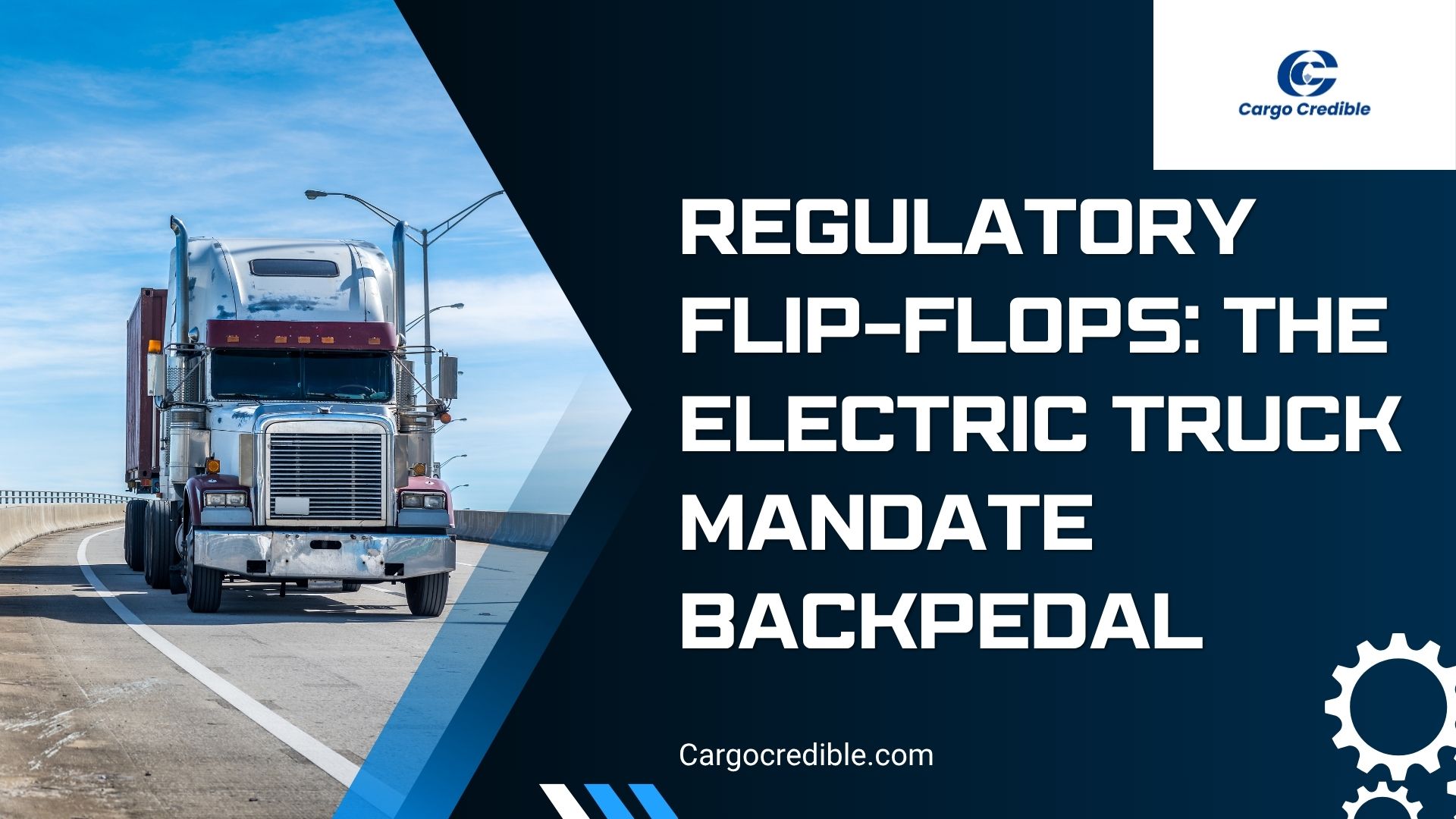Regulatory Flip-Flops: The Electric Truck Mandate Backpedal

California, once a national leader in pushing for zero-emission freight trucks, has made a surprising and impactful retreat. The state has officially repealed key portions of its Advanced Clean Fleets (ACF) regulation—a landmark policy that forced large private fleets to rapidly transition to zero-emission vehicles (ZEVs). This backpedal marks a major shift in the heavy-duty trucking industry’s regulatory landscape and carries broad implications beyond California’s borders.
The Advanced Clean Fleets Regulation: Ambition Meets Complexity
The ACF regulation had set a bold agenda: private and federal fleets operating medium- and heavy-duty trucks were required to adopt zero-emission technologies starting in 2024. For specific high-priority groups, like drayage trucks servicing ports, the mandate scheduled a full transition to electric or hydrogen trucks by 2035. This was coupled with the companion Advanced Clean Trucks (ACT) rule that targets manufacturers’ ZEV sales.
The motivation was clear—reduce harmful diesel emissions, improve public health, and combat climate change by accelerating the electrification of trucks, which are among the largest polluters on the road. This put California at the forefront of the green transportation movement, creating a strong signal for fleets and manufacturers to prepare for an electric future.
Why Did California Pull Back?
Despite its environmental goals, the mandate hit multiple steep barriers that collided into a regulatory reversal:
- Legal and Federal Hurdles: To impose vehicle emissions standards stricter than the federal government’s under the Clean Air Act, California needed a waiver from the Environmental Protection Agency (EPA). That waiver process became ensnared in political and bureaucratic battles. The Biden administration’s EPA, facing its own pressures, did not approve the waiver, making enforcement legally risky. Moreover, at least 16 states led by Nebraska sued California, arguing the mandate was unfair and overreaching. Due to these legal challenges, California agreed to repeal the high-priority and drayage fleet provisions, halting enforcement until legal clarity is obtained.
- Infrastructure and Market Realities: Electric trucks require specialized and expansive charging infrastructure, which is not yet available at scale. Building high-capacity chargers involves upgrading the electrical grid, adding substations, and allocating space—all costly and slow processes. Meanwhile, electric trucks still face limitations in range and charging speed, raising concerns about their suitability for long-haul and variable operations common in freight logistics.
- Financial and Operational Strains: The upfront cost of electric trucks is significantly higher—three to four times that of traditional diesel vehicles. For fleets operating hundreds or thousands of vehicles, this translates into heavy capital expenditure. Added to this are costs of installing charging infrastructure, training staff, and managing potential downtime. The regulatory uncertainty—whether mandates stay, come back, or shift—compounds risks, affecting investment decisions and fleet planning.
- Policy and Regulatory Uncertainty: Withdrawal of the waiver request to EPA and the commitment to not enforce the mandate’s key provisions signaled a strategic retreat by California Air Resources Board (CARB). CARB indicated it may reconsider approaches that better preserve emissions benefits while navigating federal hostility and legal constraints.
Ripple Effects Across the Industry and the Country
California’s decision sends shockwaves beyond its borders:
- For Other States: Many states historically adopt California’s clean air rules, so the backpedal slows a domino effect of similar mandates nationwide. The pathway to cleaner trucks became less certain, prompting states and fleets to pause or rethink their plans.
- For Fleets: This offers short-term relief from immediate costly compliance, allowing fleets to prioritize financial health and operational stability. But it sharpens long-term uncertainty. Fleets must now carefully weigh whether to invest in expensive ZEVs now or delay purchase, risking being out of compliance if rules tighten later.
- For Manufacturers and Financiers: Production plans, technology development, and financial risk calculations are disrupted. Mandates are vital to scaling ZEV technologies; their repeal threatens economies of scale and investor confidence.
- For the Electric Transition: The backpedal signals that regulations alone cannot drive the transition without synchronized advancements in charging infrastructure, vehicle technology, and financial incentives. Forcing across-the-board ZEV adoption before readiness breeds pushback and impracticality.
What Should Fleets and Stakeholders Do Now?
Given this regulatory flip-flop, fleets and related stakeholders need to:
- Clarify Current Obligations: Know that private fleet mandates under ACF are repealed, but public fleet rules remain active awaiting federal waivers.
- Monitor Regulation Trends: Stay alert to legislative and legal developments that may revive or reshape mandates.
- Balance Investment Decisions: Analyze fleet replacement timing, infrastructure readiness, and financial impacts amid uncertainty.
- Explore Hybrid and Flexible Strategies: Consider mixes of internal combustion, hybrid, and ZEV vehicles aligned to operational needs and evolving policy.
- Engage in Policy Discussions: Participate in industry groups to influence regulatory development and gain early insights.
The Bigger Picture
California’s electric truck mandate backpedal illustrates the complex interplay of ambition, technology, law, and market realities. While reducing emissions from freight trucks remains a vital goal, achieving it requires stable, achievable policies grounded in operational and financial realities. Regulatory flip-flops are costly—not just in dollars, but in market confusion and lost momentum. For fleets, manufacturers, insurers, and investors, this event underscores the importance of resilience, flexibility, and informed planning in navigating the unpredictable road ahead toward sustainable trucking.
Comments (0)
- No comments yet.